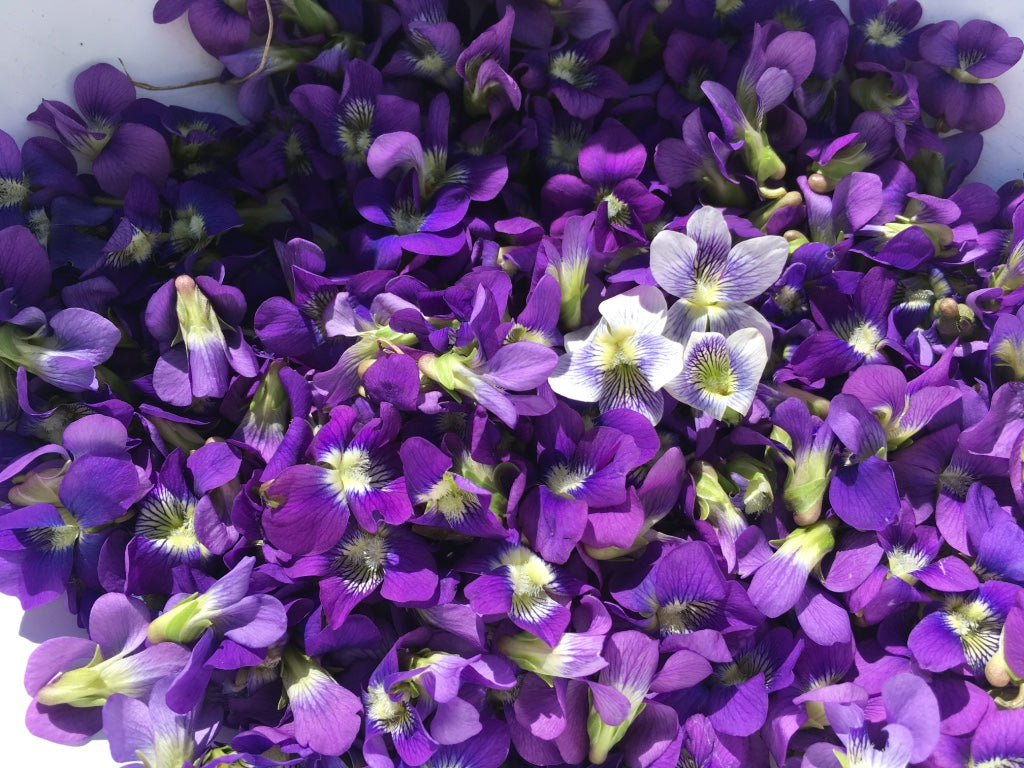Sharing a romantic floral story to celebrate Valentine's Day
Viola sororia, the lesbian flower
People used to attach a lot of meaning to the flowers they gave one another. 100 years ago, everyone knew if you gave a yellow rose it meant friendship, a yellow carnation meant rejection, the red rose was reserved for lovers, and violets were a way for a women to let another woman know she fancied her. The sapphic ritual is thought to come from Sappho herself, who wrote about violets in her famously WLW poems. I wasn’t aware of this association until I looked into the latin name of common blue violet, Viola sororia. In latin, sororia means “sister” or “female friend”. Some say the latin name is a reference to how similar this species of violet looks to many other violets. But if that were true, wouldn’t there be sororia species in other genuses? I tend to think this species name has more to do with the cultural significance of the flower.
Almost everyone reading this has noticed violet underfoot in late spring. This species, the common blue violet, is one of the many violets that has caught your eye. Its native range stretches from the east coast through the Great Plains. On top of that, it can be found all over North America wherever there is just the right soil and sunlight to please it. Violets are native and will come back year after year in the same place.
Violet is a key herb for gentle lymphatic stimulation and is beloved for its profound demulcent and emollient properties. Violet’s cooling and soothing nature make it an excellent pairing to take the edge off of herbs that are harshly hot and drying, such as Poke root. Violet encourages gentle lymphatic stimulation and can be consumed as a tea, tincture, or used externally for this purpose. Violet is a standard addition to breast massage balms for this reason. When a moistening herb is needed, Violet is the first I think of. When taken internally, it is considered a demulcent, soothing inflammation by providing a protective film over the mucous membranes. Externally, it is considered an emollient because of its ability to soothe and soften the skin.
Harvest: Violet leaves are best harvested before and during the flowering period. Flowers can be harvested whenever they are blooming. This is usually in spring, though I have made the occasional summer Violet harvest from slow growing patches found in deep shade. Violets can be worked with fresh or freshly dried.
Medicine Making:
Violet Tincture: Fresh leaf and flower (1:2 in 95% alcohol); dried leaf and flower (1:5, 60% alcohol). 1-3 ml, up to 5 times a day.
Violet Oil: Dried leaf and flower (1:4). Pairs well with Calendula and Dandelion flowers for a breast massage balm. Use infused oils as is or turn into balms and creams.
Violet Tea: Dried leaf and flower and drank freely as a spring tonic or addition to lymphatic support tea blends.
Violet Syrup: A gorgeous purple syrup can be made from an infusion of the flowers alone. Make a strong hot infusion and allow it to sit for 24 hours. Strain and combine with equal weight sugar as you heat up in a double boiler. If you have hard water, that extra alkalinity will throw off the color. Add a few drops of lemon juice to neutralize it and coax a vibrant color.
-------------------------------------------------------------------------------------

